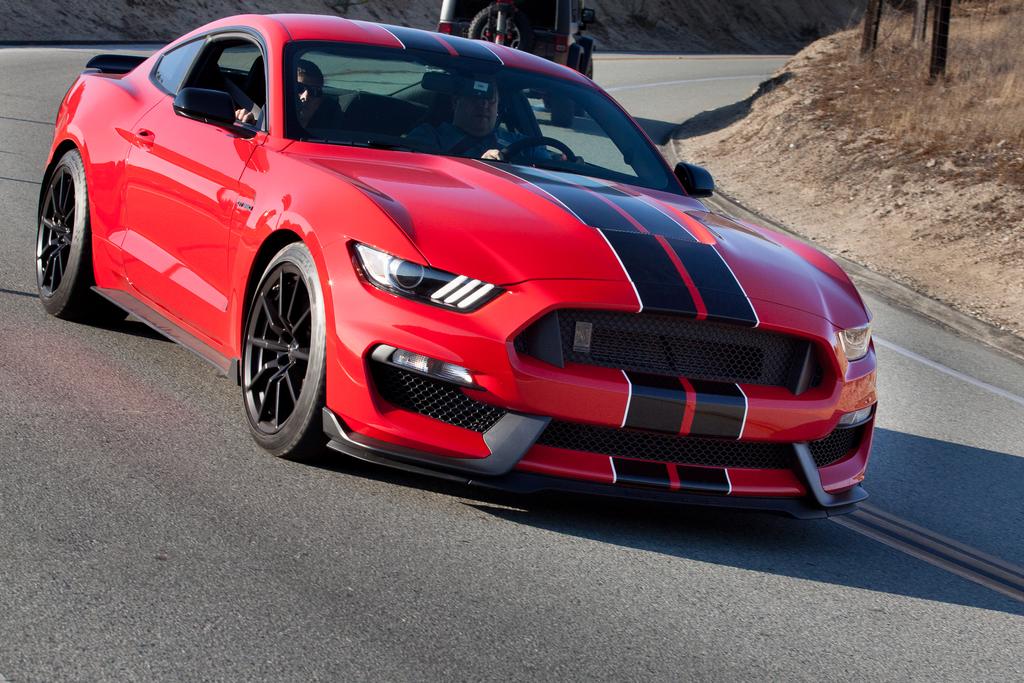
Redesigned for 2015, the Mustang's sophomore year welcomes its newest variant, the track-oriented 2016 Shelby GT350 and GT350R that are anything but a simple appearance package, featuring the right performance-minded hardware from top to bottom to live up to Ford's claim that it's the most track-capable Mustang it's ever built.
Related: Ford Shelby GT350 Mustang Delivers 526 Horsepower
Ford went through the Mustang top to bottom transforming the car bit by bit into a ferocious corner-carving machine. The list of the most significant changes include an all-new 526-horsepower, 5.2-liter V-8; a significantly reworked suspension with Ford's first use of a magnetic style damper as an option; big stopping-power brakes; wide wheels and tires plus an all-new six-speed manual transmission suited to work with the unique characteristics of the 5.2-liter. The GT350R is the ultimate-handling Mustang with super sticky Michelin Pilot Sport Cup 2 Tires, carbon-fiber wheels, a huge downforce-generating wing and roughly 120 pounds of convenience features removed.
High-Revving V-8
The GT350's V-8 is without a doubt a highlight of the car when stretched to its mind-boggling 8,250 rpm redline. At and approaching redline, the symphony of spent combustion that blasts out of the pipes should be illegal; all it does is make you want to hammer down on the long pedal over and over again, a desire I was happy to oblige during a recent test event on and around Mazda Raceway Laguna Seca in Monterey, Calif.
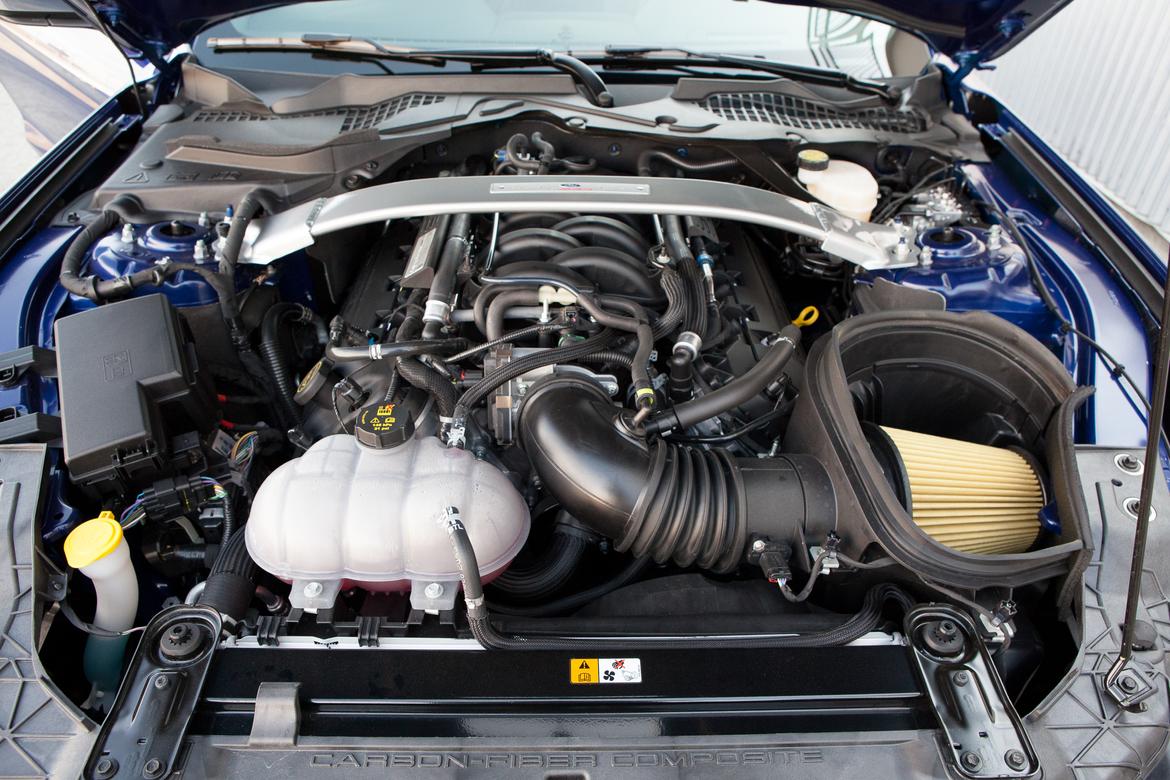
2016 Ford Mustang GT350; Cars.com photo by Joe Bruzek
A valve-operated exhaust system has much-appreciated mild to wild modes, allowing you to deafen passengers while barreling through a tunnel and later sneak back into your neighborhood undetected. The GT350's exhaust in full-bore mode might be the loudest exhaust system I've heard on a factory car.
Let's revisit that 8,250 rpm redline. It's insane to wind out a bone stock, factory V-8 in a Mustang to those kinds of speeds and not expect the connecting rods to come blasting out of the engine block. The unique flat-plane crankshaft is responsible for the high engine speeds and quickness of revs; it gave Ford engineers the ability to open up the cylinder head, intake and camshaft to unleash more power, and it's the crankshaft configuration that gives the GT350 such a unique exhaust sound.
The practicality of an 8,250-rpm engine is best experienced on the track where the GT350 can stretch its legs between corners without having to upshift. But when you do have to upshift, the new transmission designed to match the high rpm characteristics of the 5.2-liter allows lightning quick shifting with a light but precise shifter and clutch pedal.
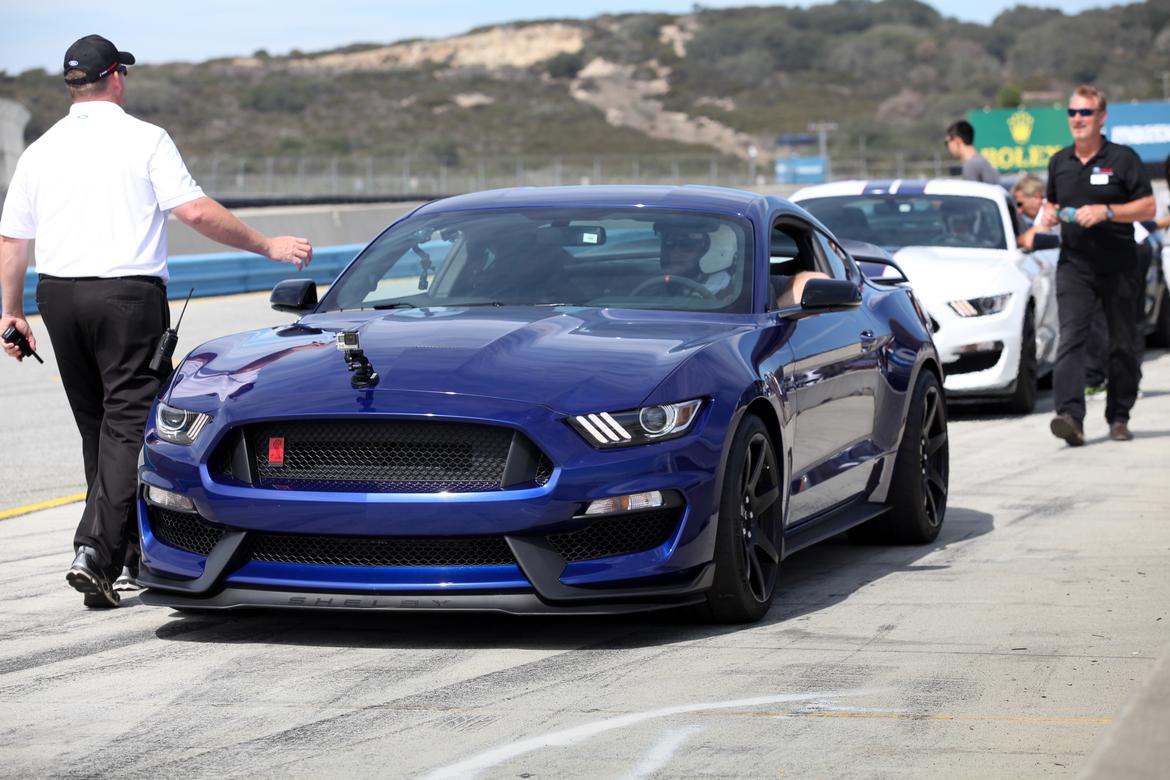
2016 Ford Mustang GT350; Cars.com photo by Joe Bruzek
There's a lot of room in the span of 8,000 rpm for an engine to be down on power and torque, but the 5.2-liter's well-distributed torque above 3,500 rpm and peak of 429 pounds-feet at 4,750 rpm means the engine is punchy and can still pull out of its way at lower engine speeds up to the maximum power at 7,500 rpm. Some rev-happy engines aren't happy off the track, but the 5.2-liter is wholeheartedly entertaining on canyon roads and even straight-line bursts of acceleration. An added bonus is that the engine maintains decent power past redline, though below 3,500 rpm you really do have to be in the right gear; don't even try to pass in 6th; it just won't work.
You won't find levels of acceleration here or a thrill ride that pins you to the back of your seat like the 662-hp 2014 Shelby GT500 or a 707-hp 2015 Dodge Challenger SRT Hellcat. No, the GT350 is more focused on delivering balance and precision despite having 91 more horsepower than the 5.0-liter-powered Mustang GT.
Bulked-Up Brakes, Chassis
The stiffness of the chassis, responsiveness and feedback of the steering and overall composure are more reminiscent of a BMW M4 than what you would typically associate as traits of a Mustang; perhaps the best thing going for the Mustang in a comparison to the M4 is that the GT350's exhaust doesn't sound like a weed whacker. Ford went through the Mustang's chassis and replaced numerous bearings with more rigid pieces, redesigned the front steering knuckle to be stiffer and lighter, widened the front track as well as bumped up the thickness of the anti-roll bars. Add in the Brembo six-piston front brakes and four-piston rears, which replace the wimpy single-piston rears on the GT, and the GT350 has all the goods you'd expect from a track-specific model.
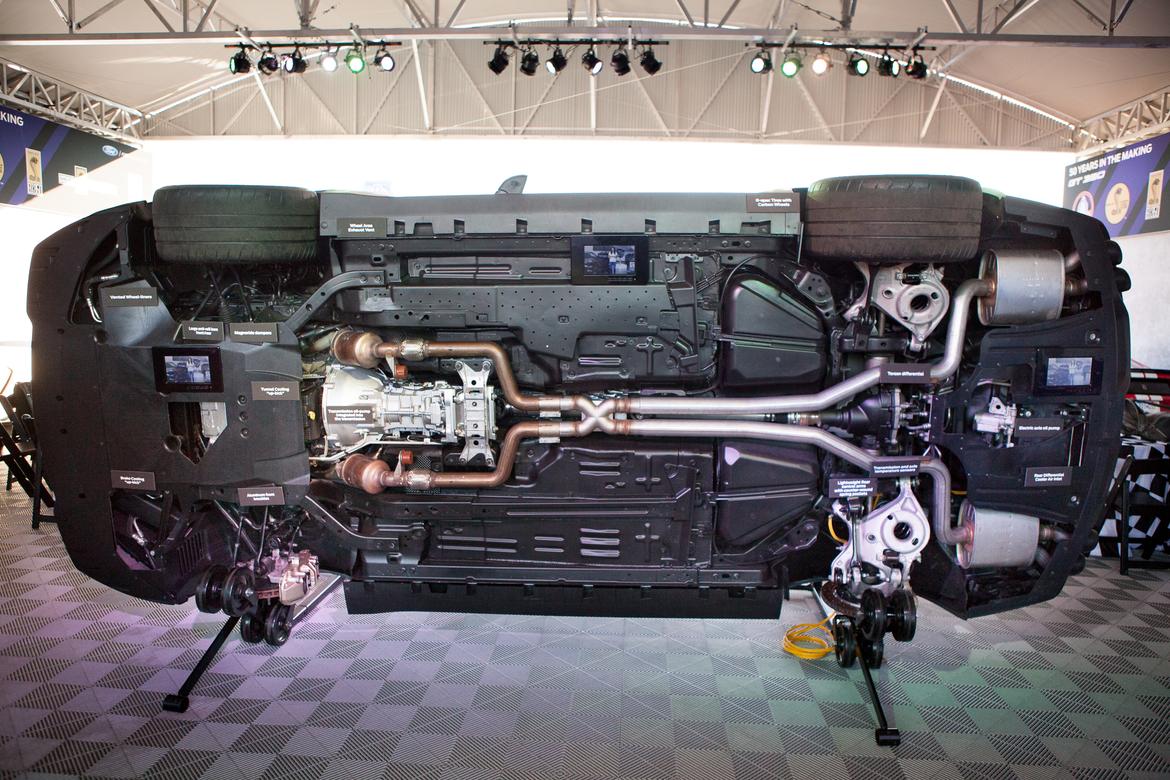
2016 Ford Mustang GT350; Cars.com photo by Joe Bruzek
Magnetic Suspension
MagneRide is the hot, new suspension setup that makes the GT350 such a performer. The system uses iron-impregnated fluid and magnetic current to continually adjust damper performance for road conditions. Base GT350s use a fixed firmness style suspension, and MagneRide is optional as part of the Track and Tech packages. MagneRide is adjustable using what Ford calls integrated driver control featuring Normal, Sport, Weather, Track and Drag driving modes that tailor the MagneRide suspension's responsiveness and firmness, exhaust modes, engine responsiveness, steering firmness, electronic stability and traction settings for specific driving styles. The GT350R gets its own unique MagneRide tuning.
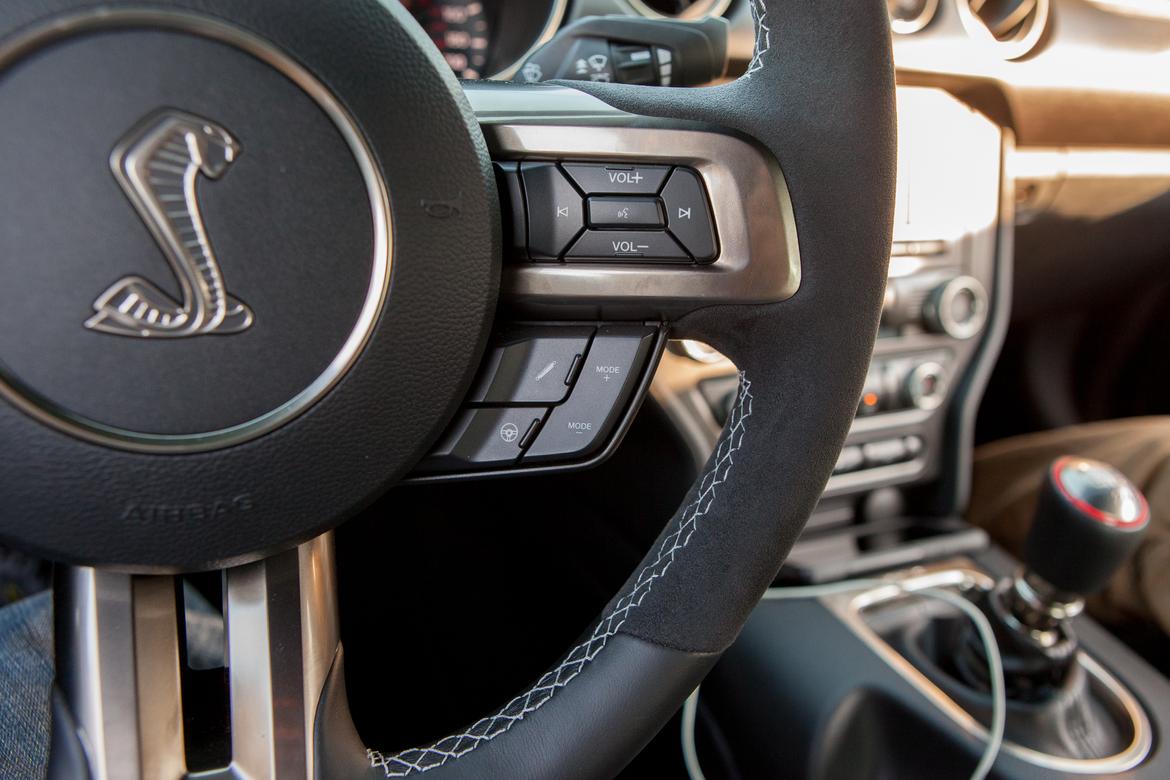
2016 Ford Mustang GT350; Cars.com photo by Joe Bruzek
There's not a huge range of road comfort separation between suspension driving modes, however. The base mode is called Normal and not Comfort for good reason. The GT350 exhibits noticeable noise and taut composure on the road even in the softest mode, so it's clear this ride is tuned for sport and not comfort. But I think that works. Like the M4, the GT350's slightly disruptive ride is a constant reminder that you're driving something special even if it means an uncomfortable jolt every once in a while.
On the Track
I'm no pro driver, but I found the GT350 surprisingly easy to drive on the track. When things did start to get a little hairy — more likely from me getting off line than a characteristic of the car — the GT350 provided plenty of notice through a slight chatter in the front tires indicating I should back off the accelerator and get the nose back in line. And at no point did I think the rear end was going to whip out unprovoked. Every handling characteristic of the GT is heightened, sharper and quicker in the GT350, which makes for a supremely confident handling machine.
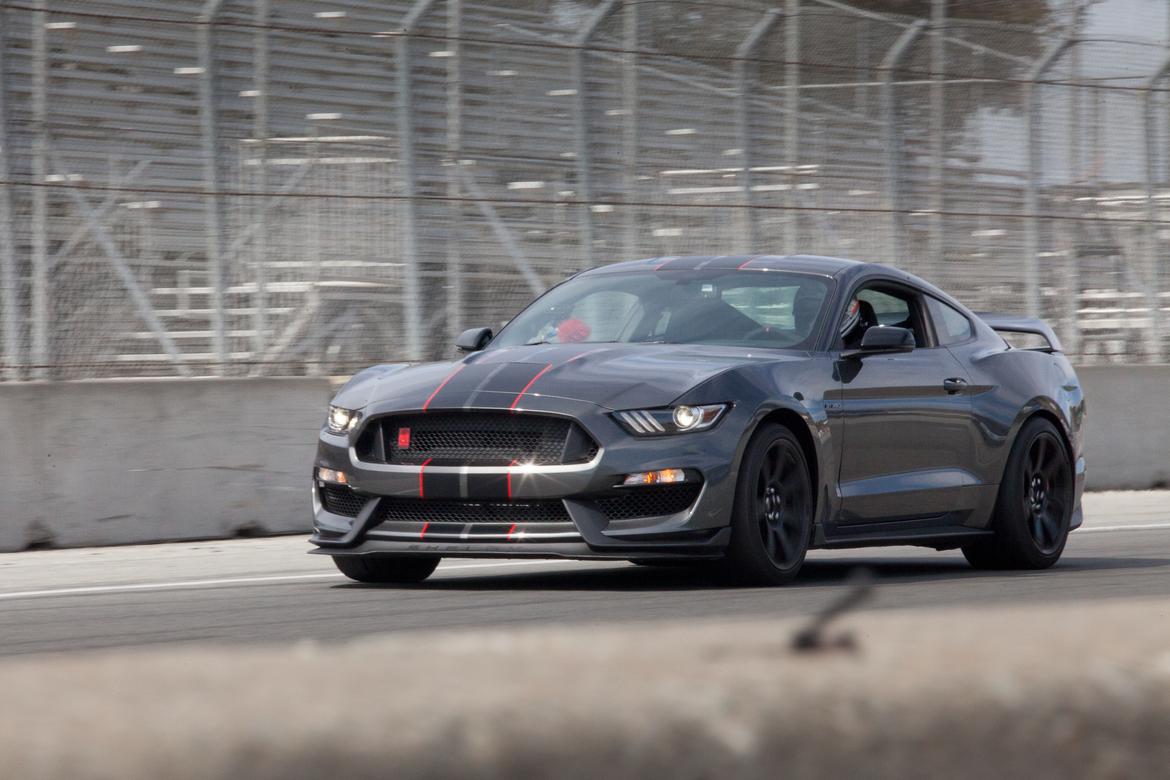
2016 Ford Mustang GT350; Cars.com photo by Joe Bruzek
It's good, but then there's GT350R "good." The R model carries significantly more cornering speed with higher levels of grip from the wider wheels and tires plus the stickier tire compound and giant downforce-generating wing. Between corners at Laguna Seca where the GT350 could ride out 3rd gear to the braking zone, the GT350R got off the corners with such speed that I could grab 4th gear in the same straight. The GT350R with its carbon-fiber wheels, lower stance and huge wing looks devilishly intimidating, especially in all black.
Track mode is a good go-to that never let the stability system stick its nose in my business on the track, which is appreciated compared with some overactive sport modes. Being a driver of intermediate skill, I prefer to keep the car in a mode with a safety net while learning a new track, which I was doing driving the GT350 at Laguna Seca. Track mode's stability and traction settings allow the car to slide a little, but left a safety net in place to avoid spinning out.
Worth It?
The Mustang GT350 and GT350R have the defined purpose of being corner-hugging thoroughbreds (what would a Mustang article be without an equestrian reference?), and there's an undisputable difference between the GT350 and base Mustang GT that, for some, may make it an easy decision to fork out $50,000-plus for the GT350.
The GT350 starts at $48,695 (all prices include destination), but that's not the car you want.
You want the $6,500 Track Package that boosts the car to $55,195, which still doesn't include the $1,300 gas guzzler tax the GT350 is saddled with because the GT350 is only rated at 16 mpg combined, 14/21 mpg city/highway. Nor does that price include the dealer markup that surely will be tacked onto this hotly desirable, limited-production car. A Ford Performance spokesman said GT350 production will be determined by demand, and Ford expects similar production numbers to the GT500 of recent years. The GT350R, however, will be much rarer like the former Mustang Boss 302 Laguna Seca edition.
GT350s are available with the aforementioned Track Package that includes all the bits and pieces you need to complete a track day worry free. On the technology side, the Technology Package ($7,500) includes some of the Track Package's features, but not everything. Tech cars have navigation, Sync 3, the large multimedia screen, power leather heated and ventilated seats, dual-zone climate control and more. You don't get the Recaro seats or oil coolers with the Technology Package, while in Track Package cars you're stuck with the small media display and no Sync 3; it's a bummer, really, that you can't get Sync 3 and navigation on the GT350 unless you step up to the GT350R with the Electronics Package, and that's a $66,495 car.
Is it worth it? If you take this car to track days then the answer is a solid yes, as you're getting one of the most unique and purpose-built Mustangs Ford has rolled off the assembly line in a long time. Even if you only drive the GT350 on the street, the beastly sound that emanates from the tailpipes during 8,250 rpm blasts will make you forget about the high price tag, if only momentarily.
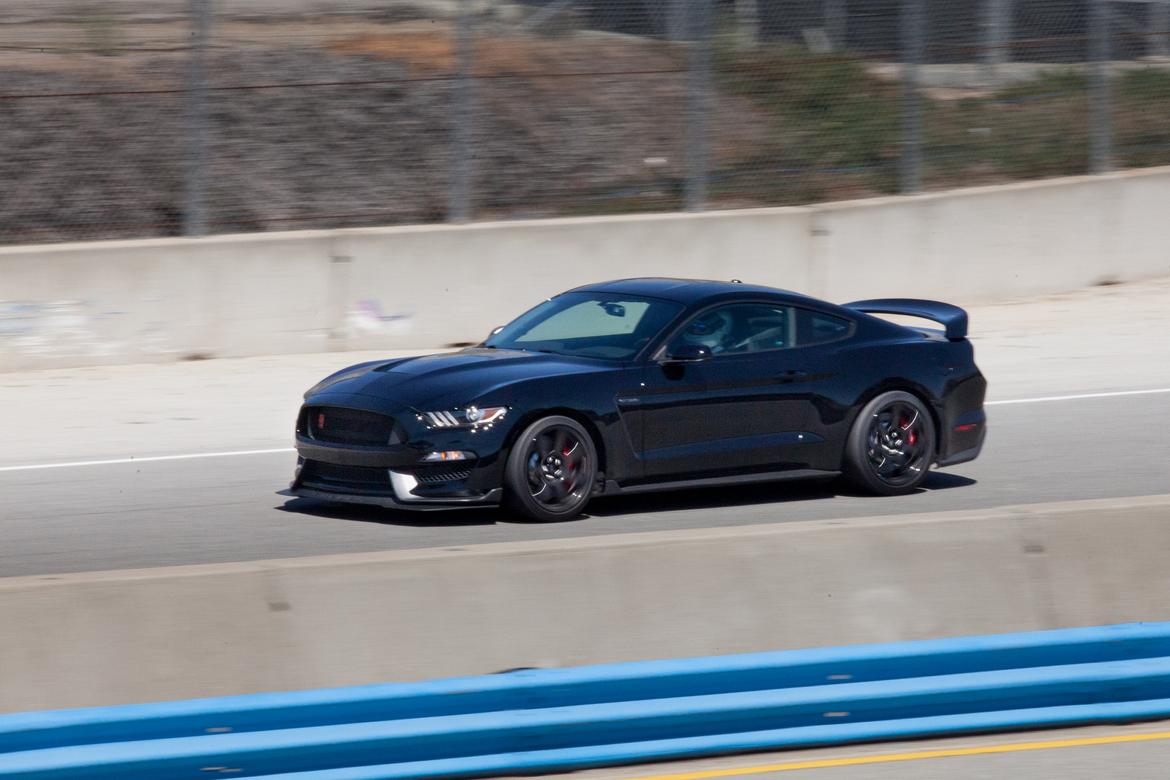
2016 Ford Mustang GT350; Cars.com photo by Joe Bruzek
No comments:
Post a Comment